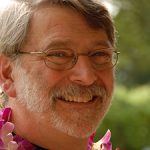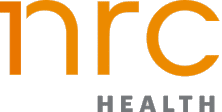When I began my medical training almost a half century ago, medical culture, and the educational system that maintained it, were based on the concept that the physician was the expert who knows best, and that a “good” patient was a compliant patient. Perhaps because I was raised to think for myself, I was unhappy in the role of shepherd for a flock of obedient “sheeple.” By the end of my first decade in practice, I had come to see my job as educating patients about their conditions and options, helping them make the decisions they needed to make, and helping them achieve their health goals. Because this worked so well for me and my patients, I have been constantly surprised (and often appalled) by the persistence of clinician, institution and now, guideline-centered care, where patients are a raw material rather than a driver. I will never forget the college student who had been told by his previous primary care physician to give up running as a sport, who became the standout captain of his college cross country team after he and I decided to pursue his goals rather than adjust his lifestyle to make his disease easy to manage.
In my role as teacher and preceptor for our local family practice residency, I saw firsthand how little medical students and residents had been exposed to the concept of patient-driven and clinician-supported care, and how readily they adopted it when given the chance. Shared work and responsibility not only works better, but is less stressful than “owning” the illnesses and outcomes of one’s patients. While it was gratifying to see growth in the student learners I worked with, it bothered me that despite talk about patient engagement, this was not becoming part of the general medical culture.
I discovered SPM as a result of an inspiring educational presentation by SPM member e-Patient Dave (deBronkart) at a medical conference. However, it was SPM’s commitment to grassroots education and the opportunity to learn directly from patients how to practice patient-led participatory medicine which led me to join. The incredible depth and breadth of experience and perspective of the SPM membership has been an invaluable educational resource for me, and has changed the way I practice medicine. More importantly, SPM is committed to the cultural change needed to make participatory medicine the standard of care.
Nelson Mandela described education as the most powerful weapon one can use to change the world. The Society for Participatory Medicine (SPM) takes this seriously, and education is the first of our four pillars, with a focus on “(developing and disseminating) resources, tools, and curricula that encourage adoption of participatory medicine practices.”
In addition to facilitating informal member-to-member education (which is an important part of the glue that binds SPMers together), the Society is actively pursuing broader educational initiatives. It recently completed a unit introducing the basic principles of patient engagement for use in a course developed by the Office of the National Coordinator for Health IT (ONC) to be used in community colleges and elsewhere for the training of people entering the field of health IT.
On a larger scale, SPM has begun work on a formal curriculum for teaching student clinicians (medical students and residents) about participatory medicine. This is a much larger project. The goal is completion over the next 18 months of a syllabus that covers the background and history of the patient engagement movement, the spectrum of patient and clinician engaged behaviors, the requirements and tools for successful engagement, the relevant underlying behavioral sciences, the basics of language and communication, the ethical and legal issues involved, issues of tools and technology, and practical issues of workflow and economics. In addition to the obvious direct benefit of teaching participatory medicine to a large cohort of individual clinicians, this project has the potential for initiating large scale cultural change: in order for medical students and residents to be taught about participatory medicine, their faculty will have to develop and demonstrate the skills they are expected to teach, and the medical community as a whole will be exposed to participatory medicine practiced as the standard of care in a teaching setting.
My hope is that, within a generation, paternalism in medicine is as outdated as bloodletting.




